Ancaster Hermitage: Haunted Ruins in the Canadian Woods
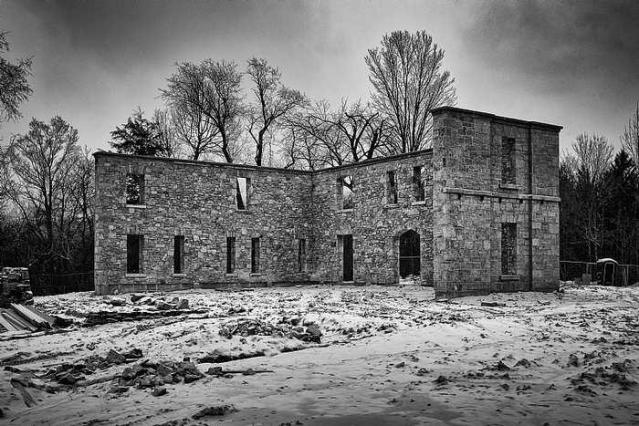
Growing up I spent a few summers at Canterbury Hills overnight summer camp in Ancaster, Ontario. During our week long stays we would swim, create tons of crafts, sing our hearts out during evening campfires and trips to the forest chapel, and spend a night camping in the woods. It was incredibly fun and I have so many wonderful memories of the friends I made and the adventures we had.
But what’s stood out in my memory the most was a beautiful historic building that sat in ruin at the end of a forest trail. I remember our cabin leaders telling us the ruins were haunted. And when we sat against the crumbling walls in the silence of the forest it was difficult to think otherwise. I’ve always wondered what happened to those ruins; the last time I saw them would be around 16 years ago. To my relief, they’re still standing and the history and ghost story I vaguely remembered has been recorded online. So as a nod to the corner of the world I grew up in, I thought I’d share a local ghost story and the haunting of what was once a large and beautiful home.
History of The Hermitage

Since 1830 The Hermitage estate has had five known owners beginning with the Reverend George Sheed, believed to also be the first Presbyterian Minister in the Ancaster area. Following his death in 1832 a second owner bought property before selling in 1833 to the third owner, Englishman Otto Ives and his Greek wife who travelled to Canada from Greece with their niece Angelica Diamante.
In 1855 the property was purchased by George Leith, son of Major-General Sir George Alexander Leith, after moving from Scotland to Canada. It was around this time that The Hermitage began to thrive. With magnificent Scottish furnishings, a library with a collection of first editions, original paintings by artists such as Raeburn, Archer, and Hogarth, stunning French windows, and walls of cut limestone, The Hermitage was one of the most prestigious homes in Ancaster. Under Leith’s ownership, the property’s 250 acre farm was developed enough by 1861 that it comfortable feed the large household of 13, which included five servants. A barn, granary, and an additional home were also constructed on the property to accommodate Leith’s farmer.
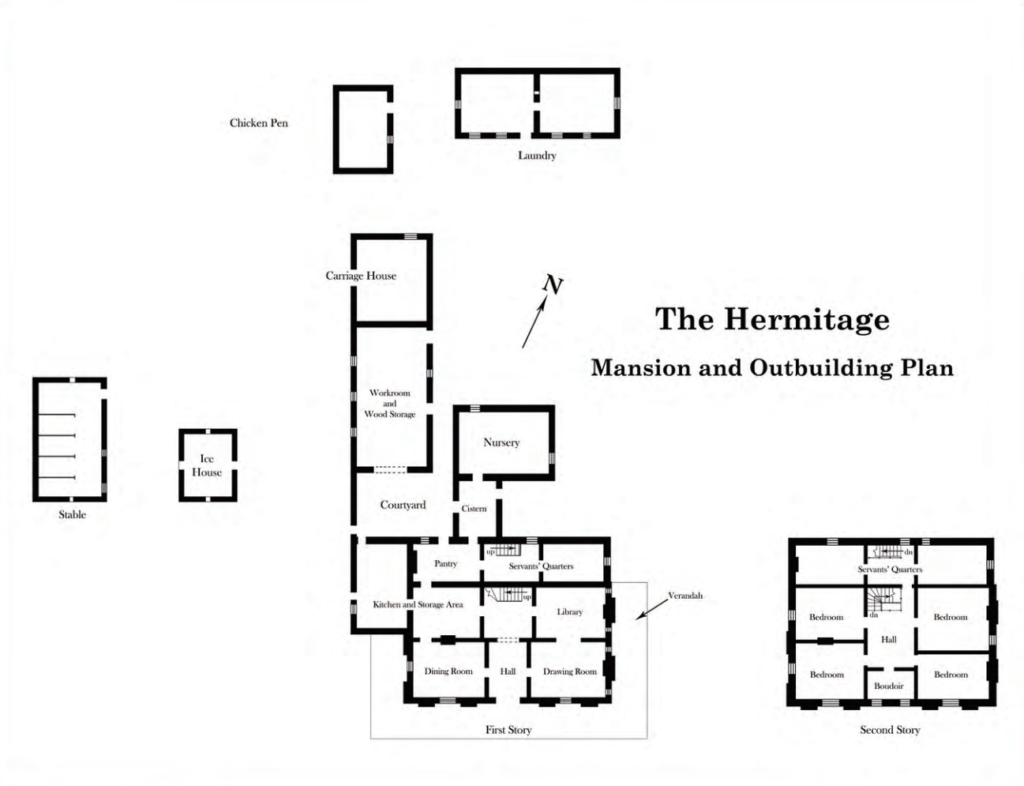
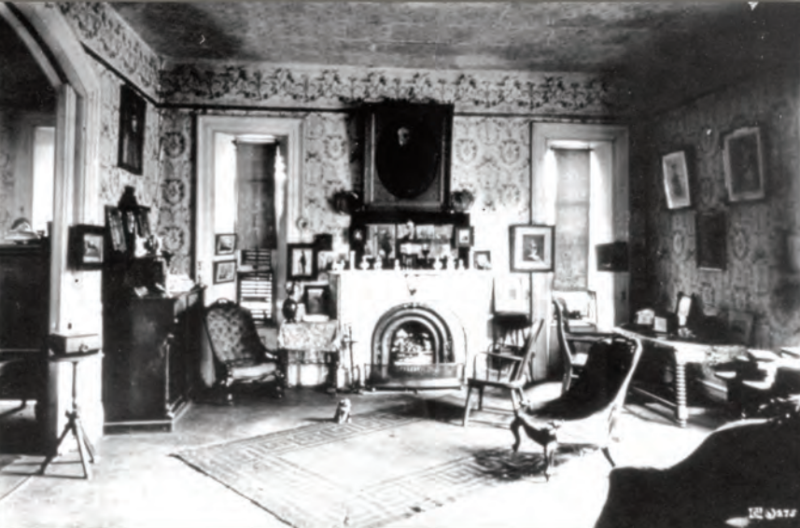
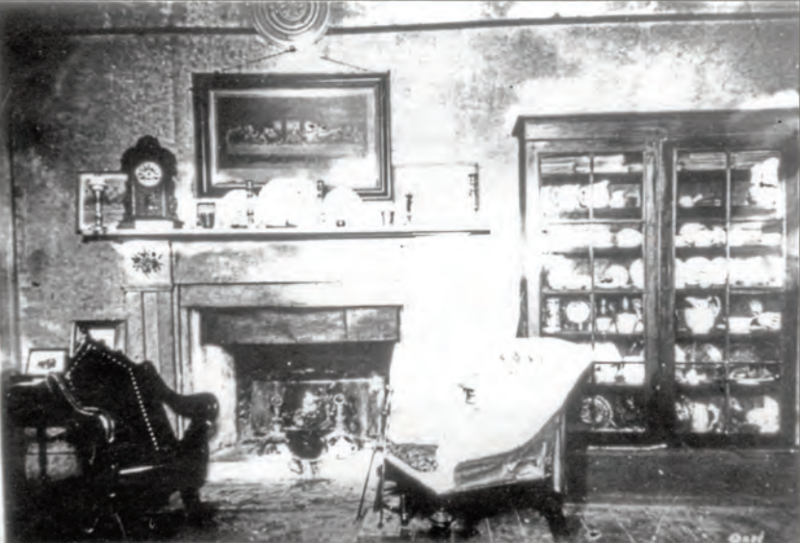
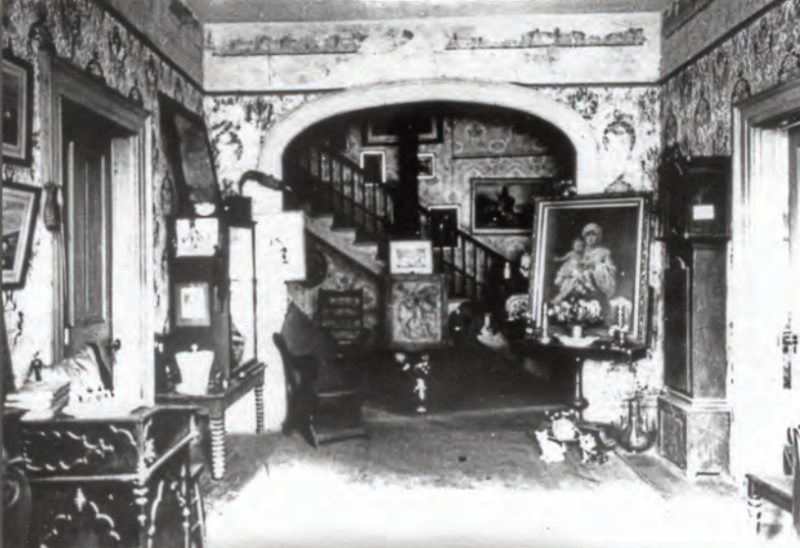
Following his death, Leith’s daughter and local writer Alma Dick-Lauder moved into her father’s beloved home, making her the fifth and final owner before a tragic incident destroyed The Hermitage beyond repair. The infamous fire that tore through the upper story of the main building on 10 October 1934 was detailed in a Hamilton Spectator article and published two weeks after the incident:
Historic Mansion Falls Prey to Conflagration
The Hermitage, historic mansion on the Mineral Springs road, surrounded by its acres of park land, framed in a setting of ancient oaks, to-day lies a smoking mass of ruins. Fire swept the structure, owned by Mrs. Alma Dick Lauder, shortly after noon and left it practically destroyed, not withstanding the efforts of the Ancaster fire department, which responded to the call for assistance.
…
Inestimable Loss
Lost in the fire were priceless heirlooms, furniture, first editions and engravings, which had been in the family for generations. Despite the efforts of the household, assisted by neighbours and members of the Ancaster Department [?], little was saved as the dried timbers fed the flames, which spread with great rapidity. The fire was thought to have started from a spark from one of the chimneys lighting on the roof [indistinguishable] luncheon party was in process at the time the fire broke out, with Mrs Sherlock Hubbard, Toronto; Mrs Sanford Carpenter, Mrs Fred Hutchinson and Mrs T. G. Anderson as guests. It was Mrs Anderson who first heard a crackling sound; and went upstairs to investigate. She discovered that the whole top floor of the house was a seething mass of flames.
Some Valuables Saved
The Ancaster fire department was called immediately and responded rapidly. When the firemen arrived, however, the whole upper storey of the house was in flames and all the contents of the second floor had been ignited. So sturdy was the construction of the building, however, the flames were slow in breaking through to the ground floor, and it was possible for the firemen to clear this part of all furniture and valuables.
Col. Clifford Hurt
Colonel E. W. Clifford, member of the Ancaster volunteer fire brigade, suffered a nasty head injury when he was struck by a falling fragment of glass. The hurt was not a serious one, however. An irreparable loss to the community and to the literary world has been suffered in the burning at the Hermitage of some original Hogarth and Archer sketches. These were highly prized by the family, in whose keeping they have remained for many years. There were, too, many priceless books from the Leith library, and furniture brought out from the family estates in Scotland.
From The Hamilton Spectator, 23 October 1934 (read the full article here)
Following the destruction of her home, Alma refused to leave and continued to live on the property in a tent loaned to her by a friend. A small house was constructed within the ruins which Alma moved into after a few weeks living outside. Here she lived out the rest of her days surrounded by her animals and the remnants of her family’s possessions until her death in 1942. In 1948 the property was sold outside of the Leith family and was eventually purchased by the Hamilton Region Conservation Authority in 1972.
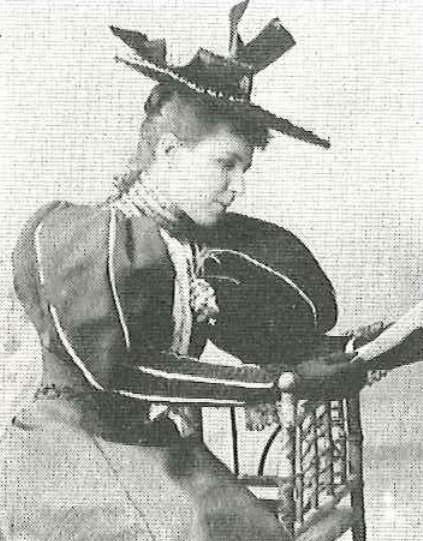
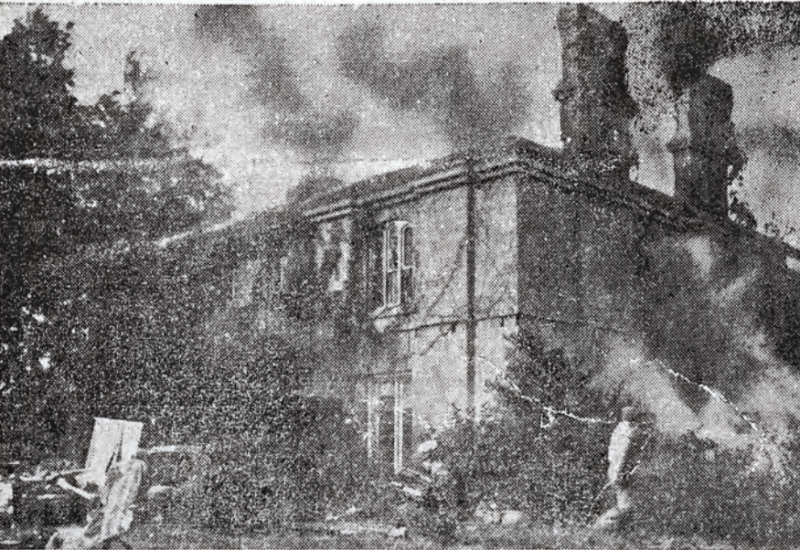
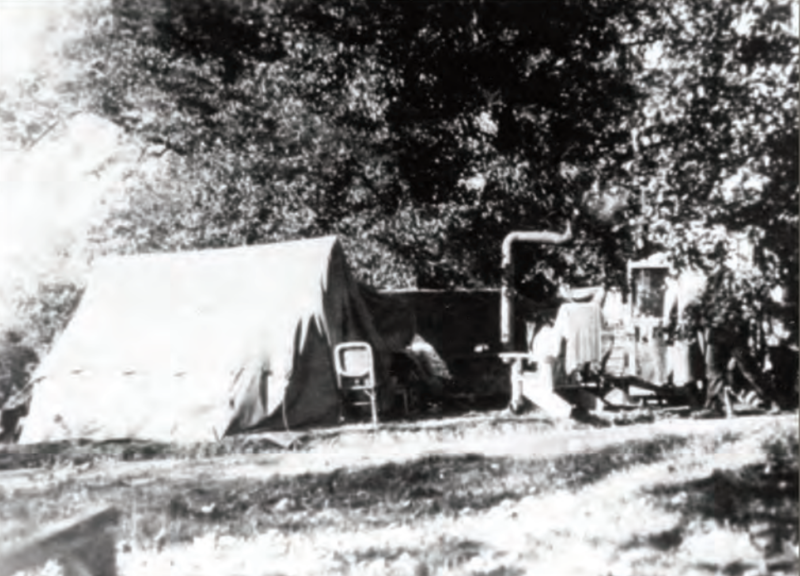
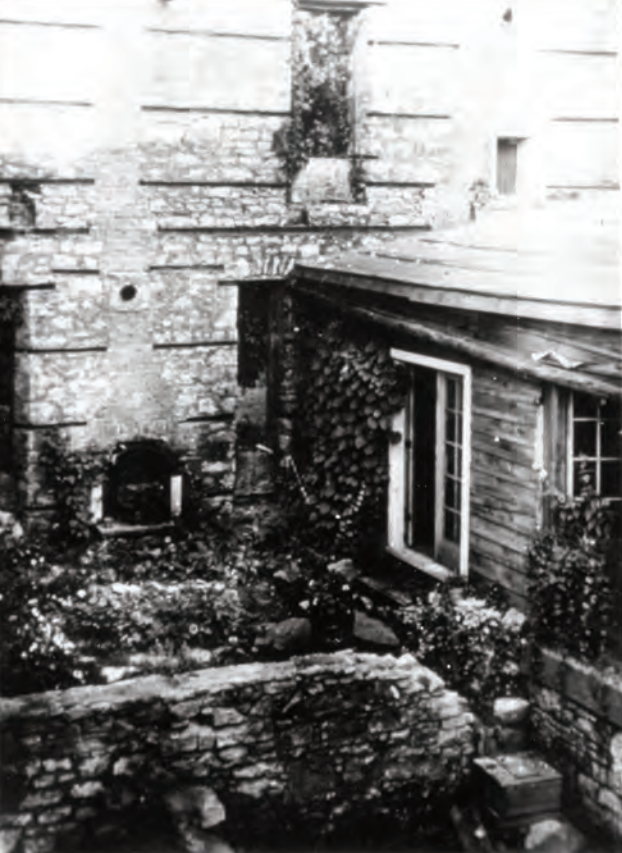
Ghosts in the Ruins
One of the most popular ghost stories set at The Hermitage involves Angelica Diamante, the niece of the property’s third owner Otto Ives. According to the legend, a man named William Black worked as Otto’s coachman and fell in love with Angelica. When William asked to marry his employer’s niece, Otto refused to give his blessing because of William’s low social rank. The following morning William failed to report to his post and, after a short search, was found hanging from the rafters in the horse’s stable.
The ghost of William Black has been reported in two locations. The first is on the grounds of The Hermitage, holding the rope that he hung himself with as he wanders for eternity without his beloved Angelica. The second location is at the crossroads of Lover’s Lane and Sulphur Spring Road. Since victims of suicide were not buried in a cemetery at this time, William was said to be laid to rest by Otto Ives at these crossroads. Here his ghost is said to cry softly on moonlit nights while he searches for his lost love Angelica who, two years later, moved to Wales with her aunt following her uncle’s death. Some have also allegedly spotted William’s ghost walking back and forth between the crossroads and The Hermitage through the darkness of the forest.
The name Lover’s Lane was inspired by the tragic love story of William and Angelica. However, other versions of the tale say William’s body was buried on The Hermitage property itself. So like any local legend, you’re likely to get a different version depending on who you ask.
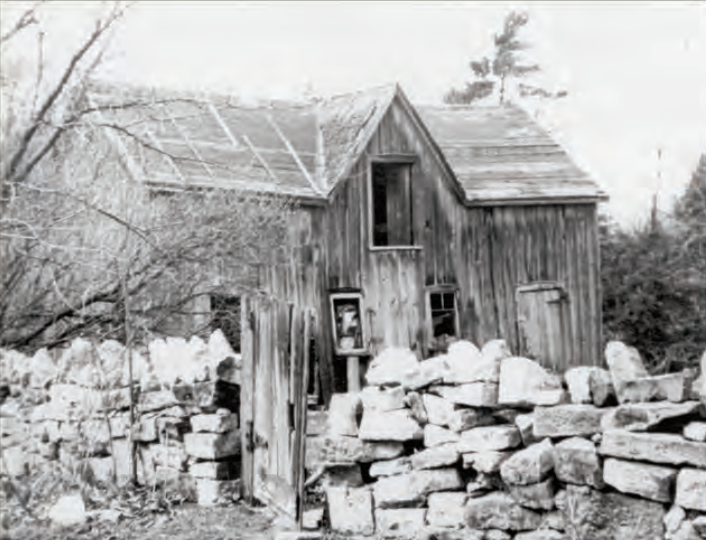
Another frequently sighted Hermitage ghost is seen wandering around the second story of the home, presumably hovering on top of a floor that hasn’t existed for decades. I like to think this is the ghost of Alma, dreaming in death of the glory days of her family’s home before the fire. There are also reports of the house appearing spontaneously in it’s original form, as if it was never destroyed. A similar claim has been made of the former stately home Knighton Gorges on England’s Isle of Wight, which is said to materialise in a ghostly form on New Years Eve.
While paranormal and historical interest in The Hermitage hasn’t wavered, the last decade has seen some debate surrounding the future of the unstable ruins. In 2016 a $460,000 restoration project began that involved “six months of painstaking disassembling, cataloguing, stabilizing and then reassembling the ruins”. Thankfully, The Hermitage still stands (well…. it’s walls still stand) today and ghost tours continue to offer guided walks around the property. If you choose to explore the area and you happen to bump into the ghost of William, maybe consider giving him a hug… it sounds like he really, really needs it.
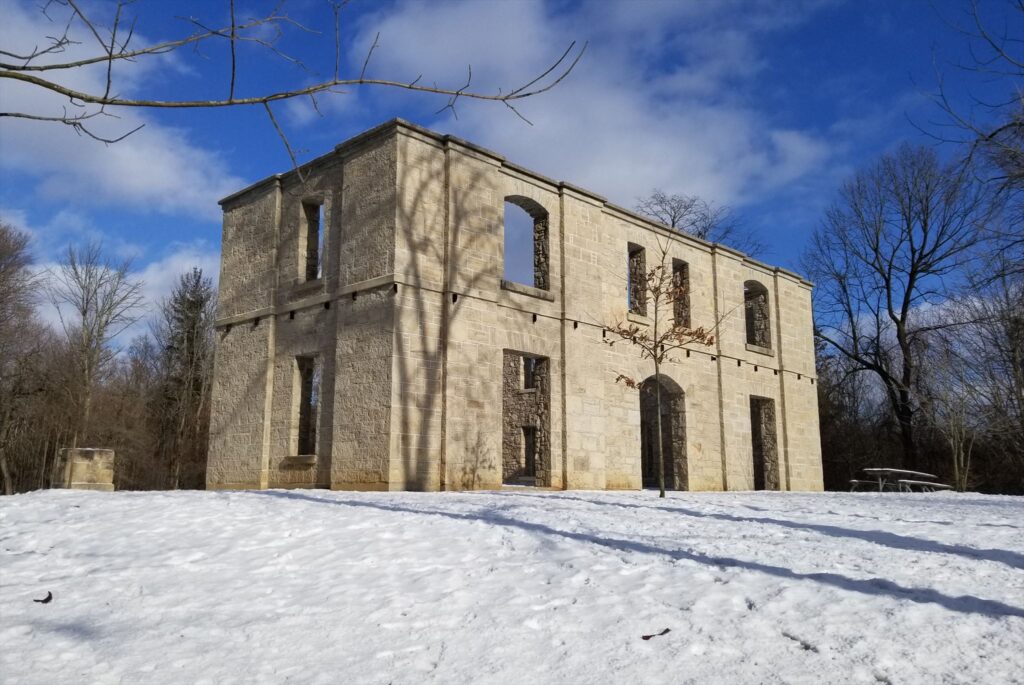
Sources and Additional Reading
Hamilton Conservation Authority – Hermitage Gatehouse (additional photos in the links at the bottom of this page)
Ontario Abandoned Places – The Hermitage (2011)
The Hamilton Spectator – Field guide to local ghosts – the most haunted places in Hamilton (2021)
Tourism Hamilton – Haunted Hamilton
Wikipedia – The Hermitage (Hamilton, Ontario)
